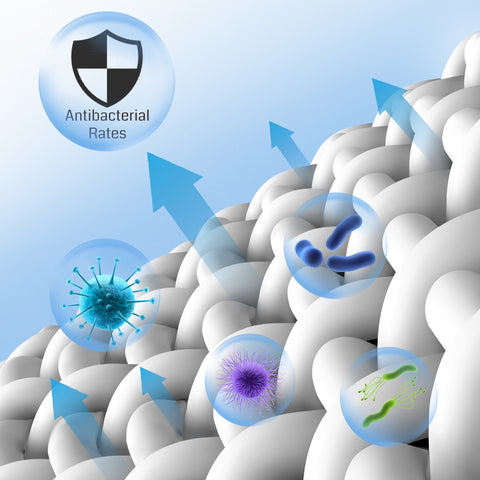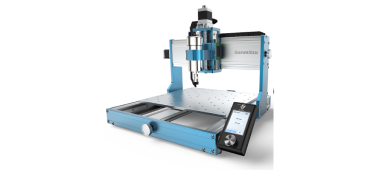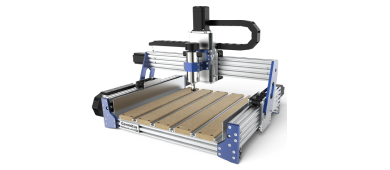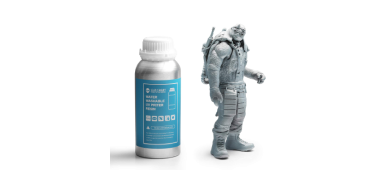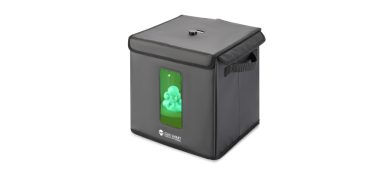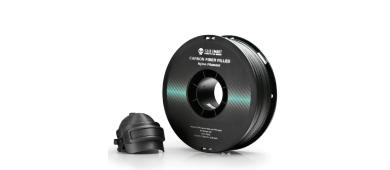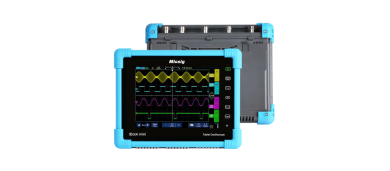GT-3 Flexible 95A TPU Filament 1.75mm, 1kg, Transparent, Anti-bacteria
20% OFF Star Wars Day Sale

Elasticity and Flexibility: Flexible TPU is known for its superior elasticity and flexibility. It can be stretched and bent repeatedly without permanently deforming, making it ideal for applications requiring parts with high resilience.
Fatigue Resistance: TPU exhibits excellent fatigue resistance, meaning it can withstand repeated cycles of stress and strain without breaking down. This makes it suitable for parts subjected to constant movement or repetitive loading.
Durable and Tough: Flexible TPU is generally more durable and tougher than PLA. It can withstand impact and handling better, making it suitable for functional and mechanical parts.
High Wear Resistance: TPU has good wear resistance, making it suitable for applications where parts will experience friction or abrasion, such as seals, gaskets, and parts in contact with moving components.
Chemical Resistance: TPU often has better resistance to chemicals, oils, and solvents compared to PLA, which can expand its range of potential applications.
Higher Temperature Resistance: TPU can typically withstand higher temperatures than PLA before softening, which is important for applications where parts might experience heat.
Better Layer Adhesion: Flexible TPU usually has better layer adhesion than Flexible PLA, which can result in stronger and more reliable prints.
Wide Range of Shore Hardness: TPU materials are available in a wide range of Shore hardness values, allowing for customization of the material's flexibility and hardness to suit specific applications.
Applications Requiring Complex Geometries: Due to its excellent flexibility and stretchability, TPU is well-suited for printing complex geometries, intricate designs, and parts with fine details.
Functional Prototyping: TPU is commonly used for functional prototyping of products like gaskets, handles, grips, and other parts that require mechanical properties similar to the final product.
Specifications
- Filaments Diameter: 1.75mm
- Dimensional accuracy: ±0.04mm
- Recommend Speed: 100-150mm/s
- Highest Speed: 200mm/s
- Recommended Nozzle Temp: 210-240°C (410℉-464℉)
- Recommended Bed Temp: 0-50°C (32℉-122℉)
- Color: Natural
High Compatibility
Compatible with Bambu Lab X1/ X1C and P1P/ AnkerMake M5/ Voron 2.4 / Flsun V400/ Creality K1/ K1 Max and Ender 7/QI DI X-Max3/X-Plus3/X-Smart3/ Raise 3D Pro 3 and RMF500.
What's Different Between Flexible PLA and Flexible TPU?
| Aspect | Flexible PLA | Flexible TPU |
|---|---|---|
| Material Composition | Modified polylactic acid (PLA) with additives | Thermoplastic elastomer with polyurethane chains |
| Environmental Impact | Relatively more biodegradable | Synthetic material, potential biodegradability varies |
| Performance Characteristics | Slightly lower rebound resilience and durability | Outstanding elastic recovery, fatigue resistance |
| Application Fields | Moderate flexibility, not extreme fatigue resistance | High flexibility, excellent stretching, fatigue resistance |
| Examples of Applications | Light stress parts, decorations, etc. | Shoe soles, seals, elastic components, etc. |
Please note that the information provided is a general overview, and specific material properties and performance can vary based on different formulations and brands. Always consider the precise requirements of your application before making a material selection.
 |
|||||
| Type | GT-3 High-Speed Glossy PLA+ | GT-3 High-Speed Matte PLA | PLA Lite | GT-3 Flexible PLA | GT-3 Anti-bacteria TPU |
| Material | High Flow PLA+ | High-Flowing PLA | Modified PLA | Flexible PLA | TPU |
| Hardness | √√√ | √√√ | √√√ | √√ | √ 95A |
| Softness & Elasticity | √ | √ | √ | √√ | √√√ |
| Wear Resistance | √ | √ | √ | √√ | √√√ |
| Printability | √√√ | √√√ | √√√ | √√ | √ |
| Max Print Speed | 500mm/s | 500mm/s | 300mm/s | 500mm/s | 200mm/s |
| Recommended Extruder | Direct/Bowden | Direct/Bowden | Direct/Bowden | Direct/Bowden | Direct |
| Performance Features | Glossy, High Hardness | Matte finish, High Hardness | Cost-effective | Flexible, Easy to Print | High Rebound, High Flexibility |





